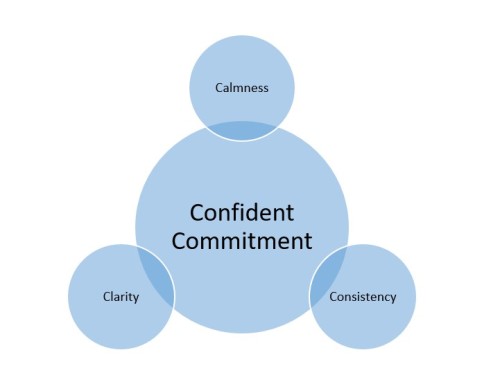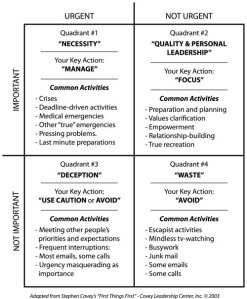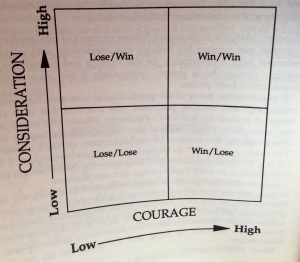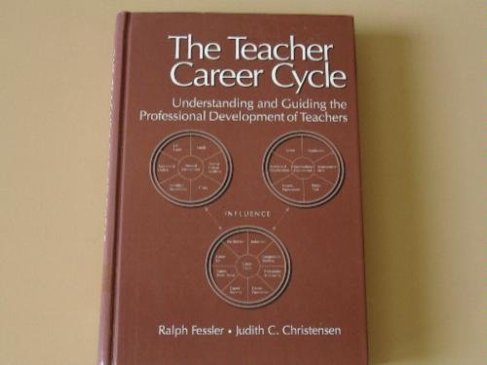The Individual
Self-Concept
Bronfenbrenner recognised the consequence of genetics and theory of self as being responsible for the person. It is the persons’ developing perception of their environment which is the next step in his conceptualisation of human development and resultant behaviour. There is a body of research which argues that aspiration is shaped by students’ perception of themselves and their efficacy to attain positive educational and occupational outcomes. Research demonstrates that a key indicator of students’ aspirations is perceived self-efficacy (Bandura et al., 2001). A contemporary study (Strand and Winston, 2006) found self-efficacy to be the fundamental factor in the variance between aspirations from Year 7 and Year 9 students attending 5 inner city schools. These differences were also intertwined with different minority ethnic groups in accordance with the research reviewed earlier (Fordham and Ogbu 1986; Kao and Tienda, 1998; Obgu 1991).
Dweck (1999) argues that a belief that intelligence is malleable and can be increased with effort and this can have a direct impact upon aspiration. A positive theory of intelligence is referred to as a ‘Growth Mind-set’, whereas a negative theory is termed a ‘Fixed Mind-set’. A positive self-concept is often a key driver for a growth mind-set and resultant high aspiration (Ahmavaara & Houston, 2007). However, there does appear to be anomalies when considering the impact of self-concept on aspiration. Despite boys consistently attaining lower levels and holding lower aspirations than girls (Schoon, Martin and Ross, 2007), boys report significantly higher levels of intelligence in relation to girls’ self-concept of intelligence (Ahmavaara & Houston, 2007). Some qualitative research suggests that boys are less likely to be emotionally open which causes a presentational bias (Kilmartin, 1994; Pennebaker, 1995; Forssmann-Falck and Kliewer, 1998). In accordance, further research suggests girls are more likely to deliberately under-estimate their self-efficacy (Barber, 1994). Ahmavaara & Houston (2007) stress that developing self-concept can be beneficial to interventions that are intended to heighten aspirations. The suggestion that responses given in focus groups or even questionnaires are influenced by gender raises the question of reliability. Indeed contemporary research questions the robustness of research into aspirations (Cummings et al., 2012). As a consequence, this model illustrates supposed relationships but it is not an attempt to identify specific causality.
Self-Concept and Gender
The literature frequently highlights the interdependence of self-perception with issues of gender. Research has shown that girls from disadvantaged backgrounds consistently have higher aspirations in relation to boys although this phenomenon is not as evident with middle and upper classes (Schoon, Martin and Ross, 2009). As a result there is a growing concern over the low aspirations that males from working class backgrounds hold. Recently, the Coalition Government University Minister, David Willetts, called for University recruiters to treat white working class boys in the same manner as underrepresented minority ethnic groups (Press Association, 2013). This awareness and concern has been compounded by UCAS (2012) reports that women are currently a third more likely to go to university than men in the UK. Also, males have lower academic outcomes at 16 and they are less likely to continue into education post 18. The influences upon gender differences in aspiration is a growing area of research however the literature reviewed is consistent in the suggestion that gender is a driving feature of aspirational development (Gutman and Schoon, 2012; Spielhofer et al., 2011; Ahmavaara and Houston, 2007; Brownlee, 2010; Kirk et al., 2012).
The literature suggests that this is apparent in the varied messages given to children according to gender (Kao and Tienda, 1998; Eccles, 1994). In addition to having lower aspirations, secondary school disadvantaged males express greater uncertainty about their career aspirations compared to female peers (Gutman and Schoon, 2012). This research supports the notion that there are gender differences in the cognitive processing of similar experiences (Eccles , 1987) such as those experiences at home and school.
Self-Concept and Time
Self-Concept is another such determinant of aspiration which is identified as being a notion interrelated with time. There are though conflicting opinions on the relationship between time and concepts of self. A study by Dewitt et al (2010) found that positive self-efficacy and consequent high aspirations in Science among Year 7 pupils was often not met with equal progression by the same pupils at Year 11. A decline in the self-perception of a student’s ability may constrain educational and occupational aspirations as beliefs play an important role in the development of career and life goals (Bandura et al., 2001). Of the literature reviewed their appeared to be divided opinions on whether self-efficacy in education tends to grow or decline through academic years. Ablard and Mills (1996) and Leondari and Gialamas (2002) found that pre-secondary school age students were more likely to believe that their ability, or in this case intelligence, could be improved through effort. However, in contrast Ahmavaara & Houston (2007) found that children have greater sense that effort will produce positive outcomes.
Studies suggest that aspiration develops in relation to educational engagement over time. Boys who perform less well at age 11 are vulnerable to becoming disengaged in education at 14 and there is an equal risk of lower aspirations through secondary education due to this transition stage (Gutman and Schoon, 2012). This is in contrast with females who are more engaged in school and attain higher levels of achievement. The findings of Gutman and Schoon (2012) support assertions that this occurrence is an outcome of female’s having greater aspirations and better scholastic preparation. Males appear more vulnerable to social immaturity and behavioural difficulties which suggests an over-reliance on socialisation factors (Goldin et al., 2006).
Microsystem
The proximal processes within the microsystem play a crucial role in behavioural development. Bronfenbrenner gave examples which included parental play with children, peer activities, learning new skills and group or solitary play. To have a significant effect upon development these interactions must occur over a period of time and frequently (2005). Explanations of process most commonly focus on the relationship between the aspiration of parents for their children and those of the children themselves (Morrison Gutman & Akerman, 2008). This interaction changes in influence over time and is interdependent on elements from other settings.
Parents
Parental education level is seen as an indicator as to whether parents are likely to promote high aspirations to their children. As a result those who need an education the most often expect it the least (Geckova et al., 2010). Parents with high levels of education are more likely to aid the processes of aspiration development, positive behaviour in school and attainment levels for their children (Hill et al., 2004). Indeed, one of the most consistent predictors of student attainment is the level of education achieved by their parents (Mayer, 1997; Scott-Jones, 1995). The assisted development draws upon the educational experience and resources to support often afforded by a high level of education (Spera et al., 2008). This involvement commonly reduces anxiety and supports high aspirations (Knowles, 1998; Trusty, 1999). Conversely, parents with lower academic attainment can become disengaged with their child’s education due to a lack of capacity to assist with their learning particularly during secondary education (Carter-Wall et al., 2012). A lack of parental involvement resulting from the disengagement from the child’s education is associated with detrimental effects upon attitude and aspiration in an educational and occupational sense (Gorard et al., 2012).
The parental belief in their ability to support educational development is fundamental to the aspirational development of the child (Bandura, 1997). As such the literature often refers to a distinct association between what parents say they want for their children and what the child aspires to (Kintrea, St.Clair and Muir Houston, 2011). Early childhood aspirations can be curtailed by the expectations of the parents. Parents who are significant in their child’s life will express their expectations and therefore become defining figures of the student’s educational aspirations and expectations (Woelfel and Haller, 1971). The level of parental expected imparted upon the child is subject to the meso, exo and macro level influences detailed in the model.
With around 42% of marriages ending in divorce (ONS, 2012) the impact of single parent families upon aspirations was surprisingly underrepresented in current research. However of the literature found, students from disadvantaged single parent families have lower educational aspirations than those of two-parent families from similar socio-economic backgrounds (Garg et al.,2006). This is in keeping with theories about the relationship between aspiration and educational attainment, as students from single parent families attain lower levels of educational attainment (Rodriguez and Arnold, 1998). Despite a recent drop in the number of divorces from 45% to 42% (ONS, 2012) the impact of this high rate requires further research for its relationship with aspiration to be fully understood. The same can also be said of parental influence on the determination of aspiration when intersected by place, ethnicity and gender.
The literature shows little in the way of national strategies to challenge this trend. Work by the Royal Society for the encouragement of Arts, Manufactures and Commerce (RSA) suggests the need for a nuanced assessment. The work suggests that the assessment should be undertaken in order to address the issues surrounding low aspirations and educational outcomes amongst students from low income households (Perry and Francis, 2010). The work by the RSA strongly questions the validity of ‘blaming’ parents for the low aspirations of their children. This assertion is in accordance with historical perspectives on social reproduction and cultural capital. Bourdieu (1973) suggests that the culture of the dominant is transmitted through education and behaviours are adjudged by this cultural measure (Dumais, 2002). Consequently, in accordance with the findings of the RSA (Perry and Francis, 2010) working class students are at a disadvantage to middle class students suggesting that the influence of parents is not the central cause of low aspirations among working class students.
While the Coalition Government’s child poverty strategy clearly recognises the need to work with parents to develop aspirations (DWP and DfE, 2011), there is a lack of clarity on how this will be achieved. The emphasis appears to be solely placed on narrowing the attainment gap rather than reducing the obstacles to the realisation of parental and child aspirations (Kintrea, St Clair & Houston, 2011).
Parents and Socio-Economic Status
The socio-economic context of human development relates to the behaviour of those in daily contact with the individual. In particular, the socio-economic status of parents is often associated with the aspirations of students (Boyask et al. 2009; Geckova, et al.; Perry and Francis, 2010). Recent longitudinal studies indicate that educational aspirations of parents and children are key indicators of educational outcomes. These aspirations are unequal between socio-economic groups and reinforce the notion of an attainment ‘gap’ associated with household income (Chowdry, Crawford and Goodman, 2011; Gregg and Washbrook, 2011). The UK has one of the steepest socio-economic ‘gradients’ in education among comparable nations (OECD, 2001). Children at the lower end of this ‘gradient’ do worse than those from advantaged areas by a greater amount than elsewhere (Hirsch, 2007). Secondary students from relatively low socio-economic backgrounds are achieving lower levels of attainment in school, express lower aspirations, leave school earlier and enter into less prestigious occupations than their more advantaged peers (Schoon, 2006). Furthermore, the association between low aspiration and low educational achievement has been the focus of government policy (DfE, 2010; Department for Communities and Local Government, 2009; Cabinet Office, 2009).
Research shows that parents from disadvantaged backgrounds have high aspirations for their children (Cummings et al., 2012). However, there is ample evidence to suggest these parental aspirations do not drive the ambitions of their children as there is a lack of engagement in education from students of disadvantaged backgrounds (Carter-Wall et al. 2012; Boyask et al, 2009; Gorard et al., 2012). School can play a key role in creating a positive environment in which agency and identity can be engaged in an effort to assimilate the aspirations of parents and students from disadvantaged backgrounds. Raffo (2010) makes reference to such mediation in suggesting that extra-curricular activities can enhance positive student identities with a view to developing a positive agency amongst students. Perry and Francis (2010) argue that too often parents have been blamed for low student aspiration yet it is the schools which must remove the obstacles which are curtailing the aspirations of students from disadvantaged backgrounds.
The ‘class structurationist’ model theorises that differences in socio-economic status of individual students largely dictates educational occupational aspirations. In effect, aspirations are rational approximations of costs and benefits of educational achievement (Jencks, Crouse and Mueser, 1983). In this model it is the resources and support available to the student which dictates the level of aspiration held. More advantaged students are more likely to hold higher, more risky aspirations as opposed to disadvantaged peers who can be risk averse. As a result socio-economic deprivation can lower aspirations due to a lack of resources invested in the child and less financial security. While this model is not uncritically accepted there are links to socialisation theories which support the notion of socio-economics being a reliable indicator of aspiration.
Parental expectations and gender
There has been a shift from the findings of earlier studies which demonstrated that parents tend to have lower aspirations for their daughters than of their sons, particularly in the subject fields of mathematics and science (Duntman, 1979). Moreover, contemporary studies have suggested that males perceptions of their ability are higher than females despite males being are more likely to be disengaged in secondary school (Chevalier, Gibbons, Thorpe, Snell and Hoskins, 2009; Schoon, 2007).
However, later studies indicate that parents have higher aspirations for their daughters rather than their sons (Schoon et al., 2007). This change was demonstrated in a recent UK study which found parents of girls had higher academic aspirations for their children than parents of boys (Willitts et al. 2005). The overall trends were affected when correlated with the ethnicity of the students. For example, Black African parents showed no significant gender difference in aspirations held for their children. However, higher aspirations were held for boys over girls in Pakistani and Bangladeshi communities. In these communities males are expected to continue their education and progress to successful careers, whereas female roles are based more on marrying young and starting a family (OFSTED, 2004). Bordieu’s ‘social reproduction’ theory is also relevant to the gender differences in aspiration development.
‘Sexual properties are as inseparable from class properties as the
yellowness of a lemon from its acidity’.
Bourdieu (1984, p 107)
The higher classes of social hierarchy see these differences to a lesser degree when compared with working class neighbourhoods and families. The varied cultural capital acquired by males and females can result in gender differences in aspiration. According to Bourdieu (1984), men are more likely to use their cultural capital to pursue educational qualifications, whereas women are more inclined to use their cultural capital to acquire a husband. According to Bourdieu (1984) these gender roles are transmitted by mothers and fathers who create a cyclical pattern in gender development of aspiration as the process is repeated with social classes. Within the literature there does appear to be some agreement (Duntman, 1979; OFSTED, 2004). However, there is a growing literature which suggests that the gender schemas created by cultural capital are either flawed or have changed since Bourdieu set out his theory (Gutman and Schoon, 2012; Schoon et al., 2007; Goldin et al., 2006).
Family and time
The literature suggests a relationship between time or transitional stages and the influence of the family structure, or microsystem, on the individual. In numerous cases; gender, family and time and are shown as interdependent in their influence upon aspiration. Kao and Tienda (1998) found that family structure had a significant influence on the process of aspiration development among girls aged 12-13. However, boys were much less effected by the family situation. While family structure at this age showed gender variation, it was the situation pre-secondary school which had a greater impact upon aspirations. Boys appear to be more influenced by family structure during pre-secondary school years. Single parent families affect the aspirations of males and females differently (Garg et al., 2006). Both genders have lower aspirations than two parent families, although boys are more negatively affected in comparison to girls (Farmer, 1985). This is also the case in more extreme family structures when children are place in the foster care system. Females have greater aspirations and are twice as likely to achieve complete a degree (Kirk et al., 2012). This gender disparity has been described as a crisis for young men, especially those of minority ethnic groups (Sadowski, 2010; Whitmire, 2010).








